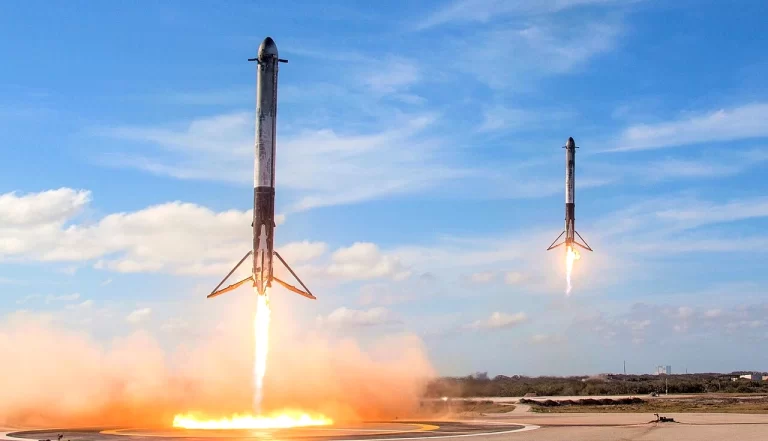In the ever-evolving landscape of heavy machinery and construction, Caterpillar Inc. has positioned itself as a pioneering force in the integration of autonomous and remote-operated machinery. This business case study delves into the journey of Caterpillar, exploring their strategic initiatives, challenges faced, innovative solutions, and the resulting benefits. Additionally, it examines how competitors have adopted similar strategies, drawing valuable lessons for businesses aiming to leverage advanced technologies for competitive advantage.
Company Overview: A Legacy of Innovation
Caterpillar Inc., founded in 1925, is a globally recognized leader in the manufacturing of construction and mining equipment, diesel and natural gas engines, industrial gas turbines, and diesel-electric locomotives. With a presence in over 25 countries and employing more than 113,200 individuals, Caterpillar’s commitment to innovation and sustainability is evident through its substantial investments in research and development, amounting to over $30 billion in the past two decades.
The Challenge: Addressing Safety and Efficiency in High-Risk Environments
The construction and mining industries face significant challenges impacting safety, efficiency, and sustainability. Safety concerns are paramount, with heavy machinery operations in hazardous environments leading to numerous injuries, as evidenced by 100,600 nonfatal workplace injuries in the construction industry in 2021. Labor shortages exacerbate these challenges, with a lack of skilled operators affecting productivity and project timelines.
Operational efficiency is another critical issue, as customers demand solutions that enhance productivity, reduce downtime, and improve overall efficiency to stay competitive globally. Environmental pressures also drive the need for more fuel-efficient and environmentally friendly equipment, with companies needing to comply with stringent regulations.
Technological advancements in AI, machine learning, and IoT present both challenges and opportunities, requiring companies to continuously innovate and incorporate new technologies to maintain a competitive edge. These challenges highlight the necessity for the construction and mining industries to adopt innovative solutions to improve safety, address labor shortages, optimize efficiency, and meet environmental and technological demands.
The Solution: Autonomous and Remote-Operated Machinery
Caterpillar has addressed significant challenges in the construction and mining industries with groundbreaking technological innovations and strategic investments. Their focus on autonomous and remote-operated machinery integrates advanced technologies such as autonomy, alternative fuels, connectivity, digital solutions, and electrification (AACE).
Key Innovations
By 2023, Caterpillar’s decade-long autonomous operations featured over 630 large mining trucks moving 7.5 billion metric tons without any lost-time injuries. Key products include Cat Command Technology, battery electric mining trucks, and machinery operating on alternative fuels like biodiesel, biogas, hydrogen, HVO, and methanol.
- Cat Command Technology: Enables remote control, semi-autonomous, and fully autonomous machine operations, allowing a single operator to manage multiple machines.
- Battery Electric Mining Trucks: Reduce fuel consumption and emissions.
- Alternative Fuels: Support sustainable energy transitions.
Enhanced Safety and Efficiency
Autonomous and remote-operated machinery significantly improves worker safety by reducing exposure to hazardous environments, enhances efficiency with 24/7 operation, and increases precision through advanced sensors and AI. This leads to fewer accidents, higher productivity, and cost savings.
Autonomous Haul Trucks and Underground Solutions
Caterpillar’s autonomous haul trucks operate 24/7 using GPS, radar, and AI, navigating complex environments safely. They have also developed remote-controlled loaders and trucks for safer underground mining.
Semi-Autonomous Dozers and Remote Operation Centers
Semi-autonomous dozers allow one operator to control multiple machines, boosting productivity and reducing fatigue. Remote operation centers let operators control equipment from distant, safer locations.
Cat® MineStar™ System and Strategic Partnerships
The Cat® MineStar™ System integrates technologies for equipment health monitoring and autonomous control, optimizing performance. Caterpillar’s strategic partnerships and acquisitions, like Fastbrick Robotics, further advance their autonomous solutions.
Results and Benefits: Transforming Operations and Enhancing Safety
Operational Efficiency and Cost Savings
Caterpillar’s autonomous solutions have significantly improved operational efficiency. Autonomous fleets report less fuel consumption per ton moved due to reduced idle time and fewer near-miss events. For instance, the Cat 982 XE Medium Wheel Loader has demonstrated up to 11% lower fuel consumption compared to its powershift model, translating to substantial cost savings for operators.
Enhanced Safety and Productivity
Safety improvements have been remarkable. The use of autonomous systems has virtually eliminated operator exposure to hazardous conditions, resulting in a record low in lost-time injuries. Moreover, products like the Cat R2900 XE Diesel Electric Underground Loader have improved fuel efficiency by over 31% and productivity by 20%, showcasing the dual benefits of enhanced safety and operational performance.
Environmental Impact and Sustainability
Caterpillar’s commitment to sustainability is evident in its reduction of GHG emissions and landfill intensity. By 2023, the company achieved a 35% reduction in absolute GHG emissions from 2018 levels and a 44% reduction in landfill intensity. The focus on remanufacturing has also been pivotal, with 147 million pounds of material taken back for remanufacturing in 2023 alone.
Industry Impact: Competitors Following Suit
Caterpillar’s success with autonomous and remote-operated machinery did not go unnoticed. Several competitors and industry players began developing their own solutions:
- Komatsu: Introduced the Autonomous Haulage System (AHS) for mining trucks, becoming a strong competitor in the autonomous mining sector.
- Hitachi Construction Machinery: Developed its own autonomous haulage system and remote operation technology for excavators and haul trucks.
- Volvo Construction Equipment: Focused on electric and autonomous compact equipment, particularly for quarrying and aggregates applications, exemplified by the Electric Site project.
- Sandvik: Launched AutoMine®, an automation system for underground mining equipment.
- John Deere: Made significant strides in autonomous technology for tractors and other farm equipment, primarily in the agriculture sector.
These developments highlight an industry-wide shift towards autonomy and remote operation, validating Caterpillar’s early commitment to these technologies and demonstrating their widespread recognition and adoption by major industry players.
Conclusion: Lessons in Innovation and Strategic Foresight
Caterpillar’s journey in revolutionizing heavy machinery through autonomous and remote-operated technology offers profound lessons in innovation and strategic foresight. By addressing critical challenges in safety and efficiency, Caterpillar not only enhanced its operational capabilities but also set new industry standards for sustainability. The company’s relentless focus on technological advancement and sustainability underscores the importance of proactive investment in R&D to maintain competitive advantage.
Businesses aiming to lead in their respective industries must prioritize innovation, safety, and sustainability. Caterpillar’s success demonstrates that strategic investments in cutting-edge technologies and a commitment to addressing environmental and safety challenges can yield substantial long-term benefits. As industries continue to evolve, the integration of advanced technologies will be crucial in achieving operational excellence and maintaining a competitive edge.



